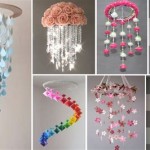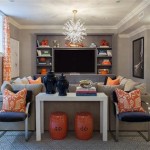High School Classroom Decorating Ideas
Creating an engaging and inspiring learning environment is crucial for high school students. A well-decorated classroom can foster a sense of community, stimulate creativity, and enhance learning outcomes. This article explores various decorating ideas to transform a standard high school classroom into a dynamic and productive space.
Establishing a Theme: Selecting a theme provides a cohesive framework for the classroom décor. Themes can range from academic subjects (literature, science, history) to broader concepts like growth mindset, global citizenship, or creativity. A chosen theme helps guide color choices, material selection, and overall design, creating a unified and immersive environment.
Utilizing Wall Space Effectively: Walls offer the largest canvas in a classroom. Beyond traditional posters and bulletin boards, consider incorporating student work displays, interactive learning stations, and inspirational quotes. Chalkboard paint or whiteboards can create designated spaces for collaborative brainstorming and problem-solving.
Incorporating Flexible Seating Arrangements: Traditional rows of desks can be restrictive. Flexible seating options, including beanbag chairs, standing desks, and collaborative work tables, cater to diverse learning styles and promote student engagement. These arrangements allow for quick transitions between individual and group activities, fostering adaptability and collaboration.
Leveraging Technology Integration: Technology plays an essential role in modern education. Integrating technology into classroom décor can enhance learning experiences. Projectors, interactive whiteboards, and designated charging stations provide seamless access to digital resources and promote interactive learning activities.
Organizing with Functional Storage Solutions: A cluttered classroom can be distracting. Implementing functional storage solutions helps maintain an organized and efficient learning space. Clearly labeled bins, shelves, and cubbies provide designated spaces for student materials, classroom supplies, and project resources.
Emphasizing Natural Light and Greenery: Natural light and greenery can significantly impact student well-being and focus. Maximizing natural light by keeping windows unobstructed and incorporating plants can create a calming and inviting atmosphere. Plants also contribute to improved air quality and introduce a connection to nature within the classroom.
Creating Designated Learning Zones: Dividing the classroom into designated learning zones can cater to different learning styles and activities. A quiet reading corner, a collaborative work area, and a technology station provide students with choices and facilitate varied learning experiences.
Showcasing Student Work and Achievements: Displaying student work and achievements fosters a sense of pride and accomplishment. Creating a dedicated space to showcase projects, essays, and artwork celebrates student efforts and motivates continued learning and growth.
Using Color Psychology Strategically: Color can significantly impact mood and cognitive function. Warm colors like yellow and orange can stimulate creativity and energy, while cool colors like blue and green promote calmness and focus. Strategic use of color throughout the classroom can enhance the learning environment and support student well-being.
Promoting a Positive and Inclusive Environment: Classroom décor should reflect a positive and inclusive atmosphere. Displaying motivational posters, celebrating diversity, and incorporating student input in the design process fosters a sense of belonging and promotes a welcoming learning community.
Budget-Friendly Decorating Solutions: Creating an engaging classroom doesn't require a large budget. Repurposing existing materials, utilizing student-created artwork, and seeking donations from local businesses are cost-effective ways to enhance the classroom environment.
Maintaining and Updating Classroom Décor: Regularly updating classroom décor helps maintain student engagement and prevents the space from feeling stagnant. Seasonal changes, current events, and student projects can provide inspiration for refreshing the classroom environment throughout the school year.
Considering Classroom Size and Layout: The size and layout of the classroom should inform decorating decisions. In smaller classrooms, maximizing vertical space and utilizing multi-functional furniture can optimize space utilization. Larger classrooms can benefit from designated learning zones and flexible seating arrangements.
Prioritizing Safety and Accessibility: All decorating choices should prioritize student safety and accessibility. Ensuring clear pathways, securing loose items, and adhering to fire safety regulations are crucial considerations for creating a safe and accessible learning environment.
Collaborating with Students and Colleagues: Involving students and colleagues in the decorating process can generate creative ideas and foster a sense of ownership. Student input ensures the classroom reflects their needs and preferences, while collaboration with colleagues can provide valuable insights and resources.

Classroom Decoration S Easy Ideas Write On With Miss G

8 Ways To Decorate Your Secondary Classroom American Board Blog

Quick And Easy Middle School Classroom Decor Ideas Eb Academics

10 Simple Ways To Decorate Your High School Classroom Jen Siler S

10 Simple Ways To Decorate Your High School Classroom Jen Siler S

High School Classroom Decor Semi Flexible Seating In A Secondary Ela Building Book Love

Before You Decorate Your High School Classroom Busy Miss Beebe

16 Classy Decor Ideas For Your Secondary Classroom Reading And Writing Haven High School

Free Classroom Decor 2 Peas And A Dog

7 Tips For Decorating English Classrooms Teens Secondary Sara







